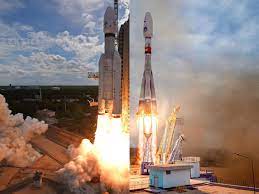Worldsfeed Desk: However, just a day after the loss of contact with the vehicle that sparked an initial investigation, the event marks another setback in the history of Russian space travel to its achievements during the Cold War, when it became the first country to launch orbital missions using satellites, humans.
Luna-25, the first Russian missile to be launched from the lunar surface since the 1970s and designed to land on the lunar surface However, the crucial orbital correction that would have made this landing possible did not materialize due to an unexplained “emergency”.” Despite efforts to reestablish contact, Roscosmos confirmed that Luna-25 had deviated from its intended orbit and may have collided with the lunar surface, ending its mission. The causes of the accident are being investigated by an interinstitutional commission.
The catastrophe paves the way for India to a possible landing on the moon near its south pole. India’s Chandrayaan-3 mission, launched in July, will conduct a test in the region after choosing an alternative and economical route. The possible success of the Indian mission could weaken President Vladimir V.Putin’s coverage of Russia’s achievements in space is a source of national pride and strength.
This Kremlin-sponsored narrative portrays Russia as a great nation held back by Western jealousy and fear of its own abilities. The state space industry has served as a geopolitical tool, helping Russia transform global relations. However, recent space efforts have not reached the peak they reached during Soviet times, as evidenced by the success of the Vega 1 and Vega 2 missions more than 35 years ago.
Previous expeditions to Mars and the disastrous Phobos-Grunt mission in 2011 have highlighted the challenges Russia faces in space exploration.Luna-25 was designed to study the composition of the lunar surface and present technologies for future robotic missions. However, delays are to be expected due to financial and technological problems, exacerbated by the sanctions imposed in the wake of the Ukrainian invasion. Russia’s dependence on European components for lunar missions further complicates matters.
Russia’s difficulties in developing space equipment, particularly electronics suited to the harsh conditions of space, have stalled progress. The delay of the Angara rocket family and the design flaws of the Oryol spacecraft illustrate these challenges. China remains the only country to land on the moon this century, while other attempts, such as Japan’s Hakuto-R 1 mission, failed due to technical flaws.


0 Comments